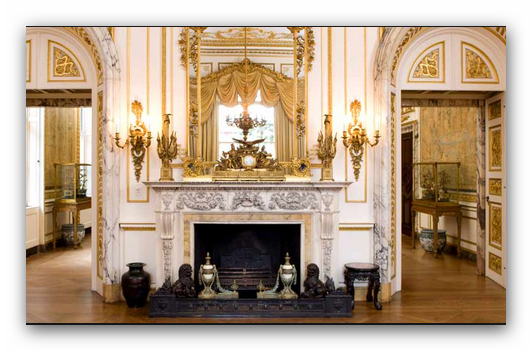This luxurious 1905 Beaux Arts mansion was built as the winter home of Larz Anderson, an American diplomat, and his wife, Isabel. Exemplifying Gilded Age Washington, the National Historic Landmark is located between 21st and 22nd streets along Embassy Row in the heart of Washington's historic Dupont Circle neighborhood. Today it is the home of The Society of the Cincinnati, the nation's oldest patriotic organization. More than four thousand objects preserve and interpret the history of the Revolutionary War, the Society of the Cincinnati, and Anderson House. Strengths of the collections include portraiture, armaments, Society Eagle insignias, and Asian art.
Larz and Isabel Anderson assembled an eclectic collection of European and Asian fine and decorative arts and historical American artifacts to furnish their Washington home. These objects now form the core of the museum's Anderson House collection, which also features family artifacts and the historic fabric of the mansion. The Andersons' collection includes objects typically sought after during the Gilded Age like European furniture, tapestries, and paintings, and Asian sculptures, ivories, and lacquer ware. But they also acquired religious artifacts from around the world and relics of American history, which were less commonly collected by their peers.
